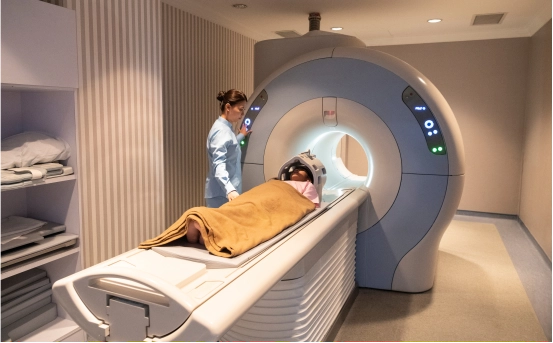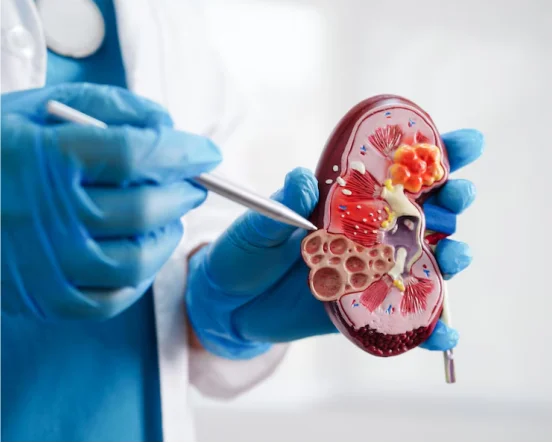Diagnosis for reconstructive urology surgery is a specialized field that focuses on restoring the normal function and structure of the urinary and genital organs. This type of surgery is essential for patients who have suffered from congenital abnormalities, trauma, infections, cancer, or complications from previous surgeries. However, before any surgical intervention is performed, a thorough and accurate diagnosis is crucial. This ensures that the most appropriate treatment plan is developed to deliver optimal results and minimize risks.
However, before considering any surgical treatment, a comprehensive and accurate diagnostic process is absolutely essential. Reconstructive procedures are often intricate, and their success depends heavily on understanding the exact nature, location, and severity of the underlying problem. A thorough diagnosis helps healthcare providers identify the most suitable surgical approach, anticipate potential complications, and provide patients with realistic expectations about outcomes and recovery. It also ensures that other medical conditions such as infections or malignancies are not overlooked and are treated appropriately beforehand.
What Is Reconstructive Urology?
Reconstructive urology refers to surgical procedures that repair or reconfigure the urinary system and, in some cases, the reproductive organs. These surgeries address:
-
Urethral strictures
-
Bladder dysfunction or injury
-
Ureteral obstructions
-
Complications from radiation or surgery
-
Congenital deformities like hypospadias
-
Gender affirmation surgery (for transgender individuals)
Accurate diagnosis is the foundation of effective reconstructive urology. It helps identify the exact nature of the problem, determine its severity, and plan a suitable approach for surgical correction.
Importance of Diagnosis for Reconstructive Urology Surgery
Timely and precise diagnosis is vital because:
-
It prevents further damage to the urinary system.
-
It helps preserve kidney function in case of obstructions.
-
It ensures tailored surgical planning based on individual anatomy and health status.
-
It improves the success rate of the surgery.
-
It helps rule out underlying malignancies or infections.
Diagnosis is typically multi-step and may involve physical exams, imaging studies, endoscopy, urodynamic testing, and laboratory workups.
Common Conditions Requiring Reconstructive Urology Surgery
Here are some common issues where reconstructive urology may be necessary:
- Urethral Strictures :- A narrowing of the urethra due to injury, infection, or inflammation. Symptoms include weak urine flow, straining, and urinary retention.
- Bladder Fistulas :- Abnormal connections between the bladder and other organs (like the vagina or bowel) that may cause leakage of urine.
- Neurogenic Bladder :- A condition caused by nerve damage leading to bladder dysfunction, often seen in patients with spinal cord injuries.
- Hypospadias and Epispadias :- Congenital abnormalities in the positioning of the urethral opening.
- Ureteropelvic Junction Obstruction :- A blockage where the ureter meets the kidney, often diagnosed in children or young adults.
- Post-cancer Reconstructive Needs :- Following cancer treatments (especially bladder or prostate cancer), reconstructive urology helps in restoring urinary or sexual function.
Diagnostic Process for Reconstructive Urology
- Detailed Medical History
The first step in diagnosis involves understanding the patient’s full medical history. Important aspects include:
-
Duration and nature of symptoms
-
Any prior urologic surgeries
-
History of trauma or catheterization
-
Previous infections or urinary tract disorders
-
Co-existing conditions like diabetes or neurological disorders
- Physical Examination
A focused physical exam helps assess any visible deformities, signs of infection, or palpable masses. In males, genital exam may reveal hypospadias, scarring, or fistulas. In females, vaginal examination helps assess pelvic organ involvement.
- Urine Tests
Basic and advanced urinalysis helps detect:
-
Infection (urinary tract infection or bladder infection)
-
Blood in urine (hematuria)
-
Signs of kidney damage
-
Cytology to rule out malignancy
- Uroflowmetry and Post-Void Residual Measurement
Uroflowmetry assesses the speed and pattern of urine flow. It is often used to detect urethral strictures or bladder dysfunction. Post-void residual volume is measured via ultrasound to check how much urine is left after urinating, which indicates bladder emptying efficiency.
- Imaging Tests
Advanced imaging is key in visualizing internal structures and identifying abnormalities:
-
Ultrasound (KUB) :- Detects kidney and bladder abnormalities.
-
CT Urography :- Provides detailed images of kidneys, ureters, and bladder.
-
MRI :- Used in complex or pelvic cases, especially to evaluate soft tissue.
-
Voiding Cyst urethrogram (VCUG) :- A fluoroscopic test that shows the bladder and urethra during urination, often used to diagnose reflux or fistulas.
-
Retrograde Urethrogram (RUG) :- Essential for assessing urethral stricture location and length.
- Endoscopy (Cystoscopy)
Cystoscopy involves inserting a thin scope through the urethra to directly visualize the bladder and urethral lining. This helps identify:
-
Strictures
-
Tumors
-
Fistulas
-
Inflammatory changes
It is often combined with a bladder biopsy when suspicious lesions are observed.
- Urodynamic Studies
Urodynamic testing evaluates how well the bladder, urethra, and sphincters store and release urine. It is particularly important in:
-
Neurogenic bladder
-
Incontinence
-
Post-surgical complications
This test includes cystometry, pressure-flow studies, and electromyography of pelvic muscles.
- Biopsy (When Required)
In cases where cancer or suspicious lesions are suspected, a tissue biopsy is taken and sent for pathological analysis to confirm diagnosis and guide further management.
Tailored Diagnosis for Specific Populations
- Pediatric Patients :- Children undergoing reconstructive urology for congenital abnormalities require pediatric-specific diagnostic imaging and sedation techniques. Renal scans and VCUG are commonly used.
- Elderly Patients :- Diagnosis in older adults must consider comorbidities like prostate enlargement, diabetes, and neurological conditions. Urodynamic studies and cystoscopy are often crucial.
- Transgender Individuals :- For patients undergoing gender affirmation surgery or dealing with post-surgical complications, diagnosis requires sensitivity, advanced imaging, and multidisciplinary collaboration.
Role of Technology in Modern Diagnosis
Modern diagnostic tools have significantly improved the accuracy and safety of urologic assessments. Some of the latest advances include:
-
3D Urethral Reconstruction Planning
-
High-Resolution MRI Scans
-
Computerized Urodynamic Analysis
-
AI-Powered Imaging Interpretation
These technologies not only assist in accurate diagnosis but also help in simulating surgical outcomes for better patient counseling.
Conclusion
Diagnosis for reconstructive urology surgery has the power to restore quality of life, especially in patients suffering from structural or functional urinary tract issues. However, the key to successful surgical outcomes lies in precise and timely diagnosis.
From patient history and physical exams to advanced imaging and endoscopic evaluations, every step of the diagnostic process contributes to developing a personalized treatment plan. If you or a loved one is experiencing urinary symptoms, early consultation with a urologist and undergoing the necessary tests can make a significant difference.























